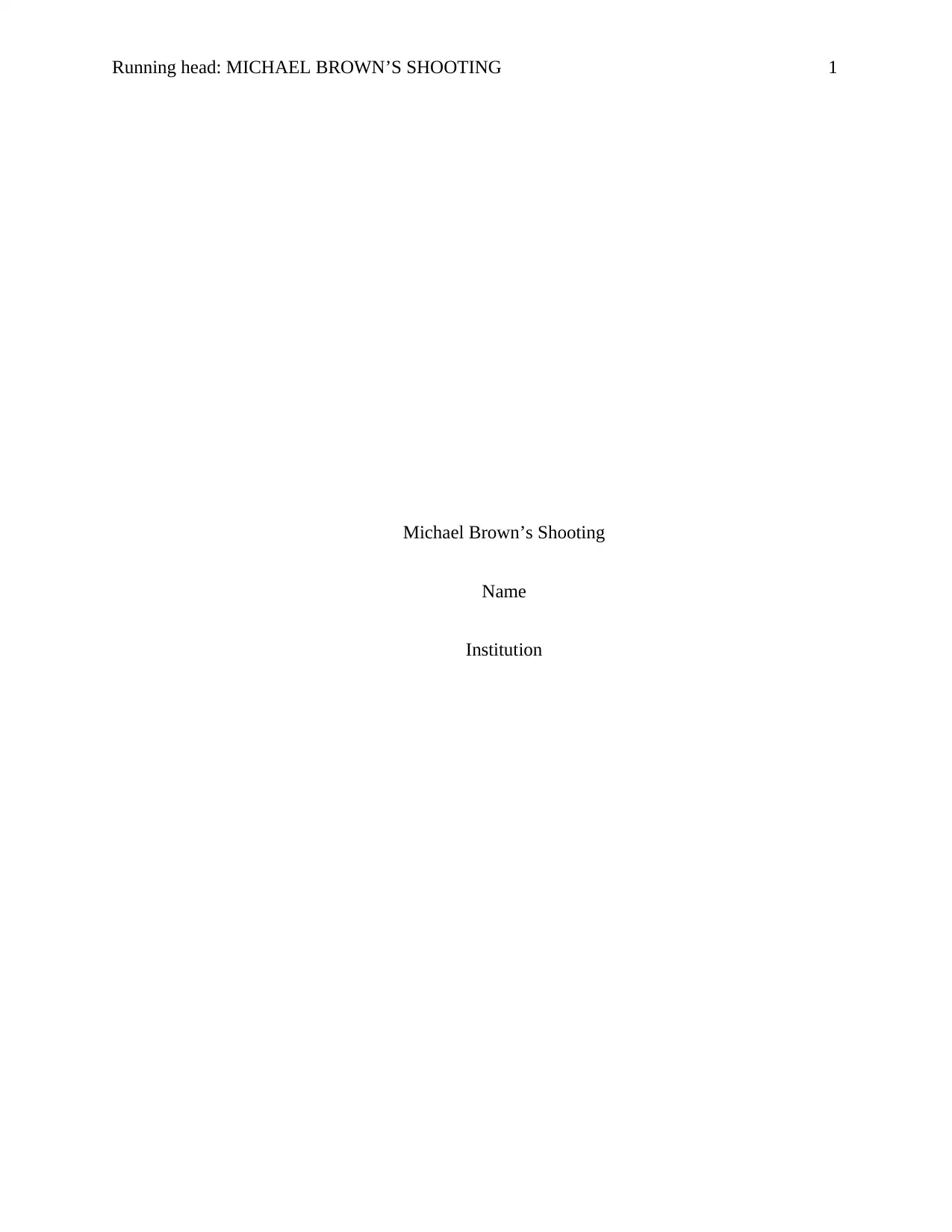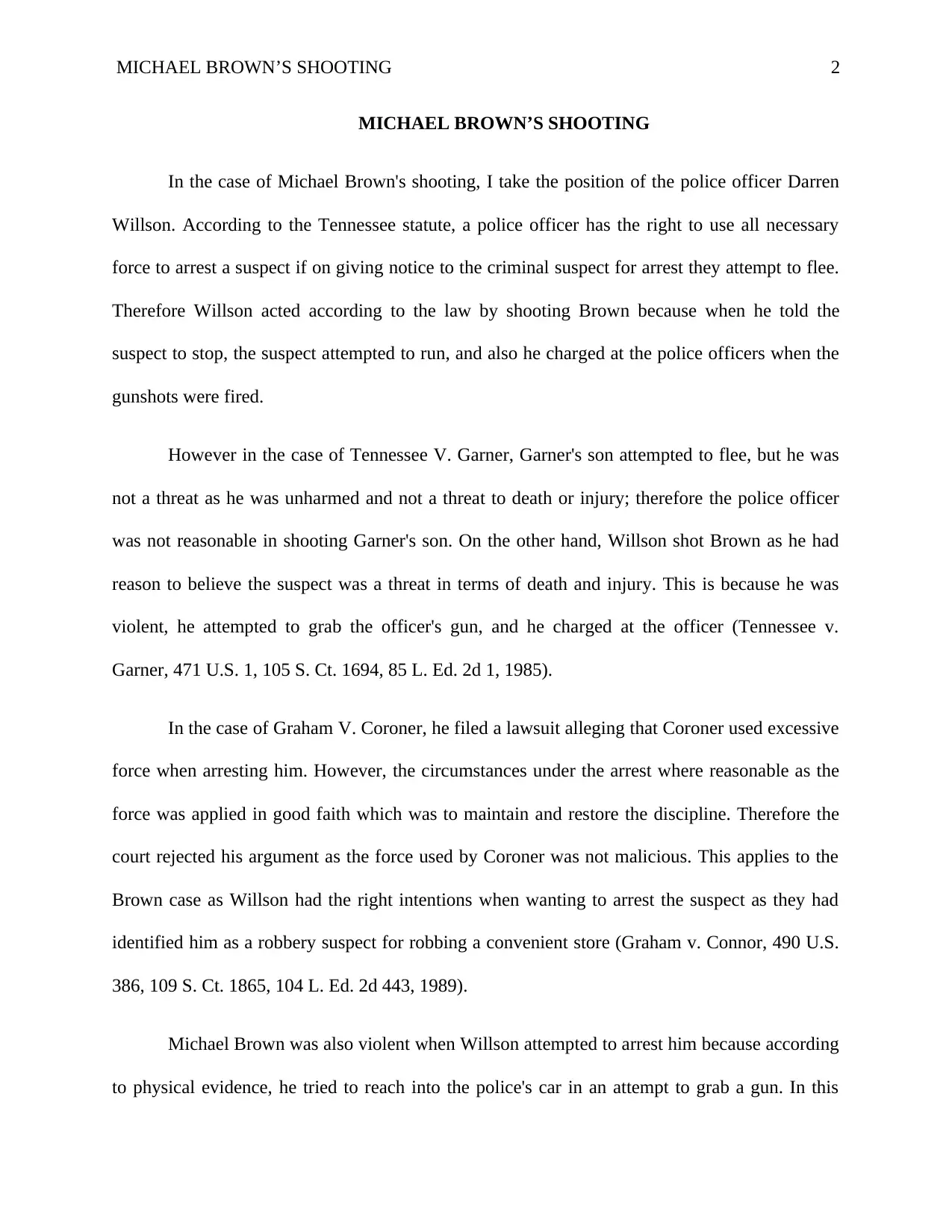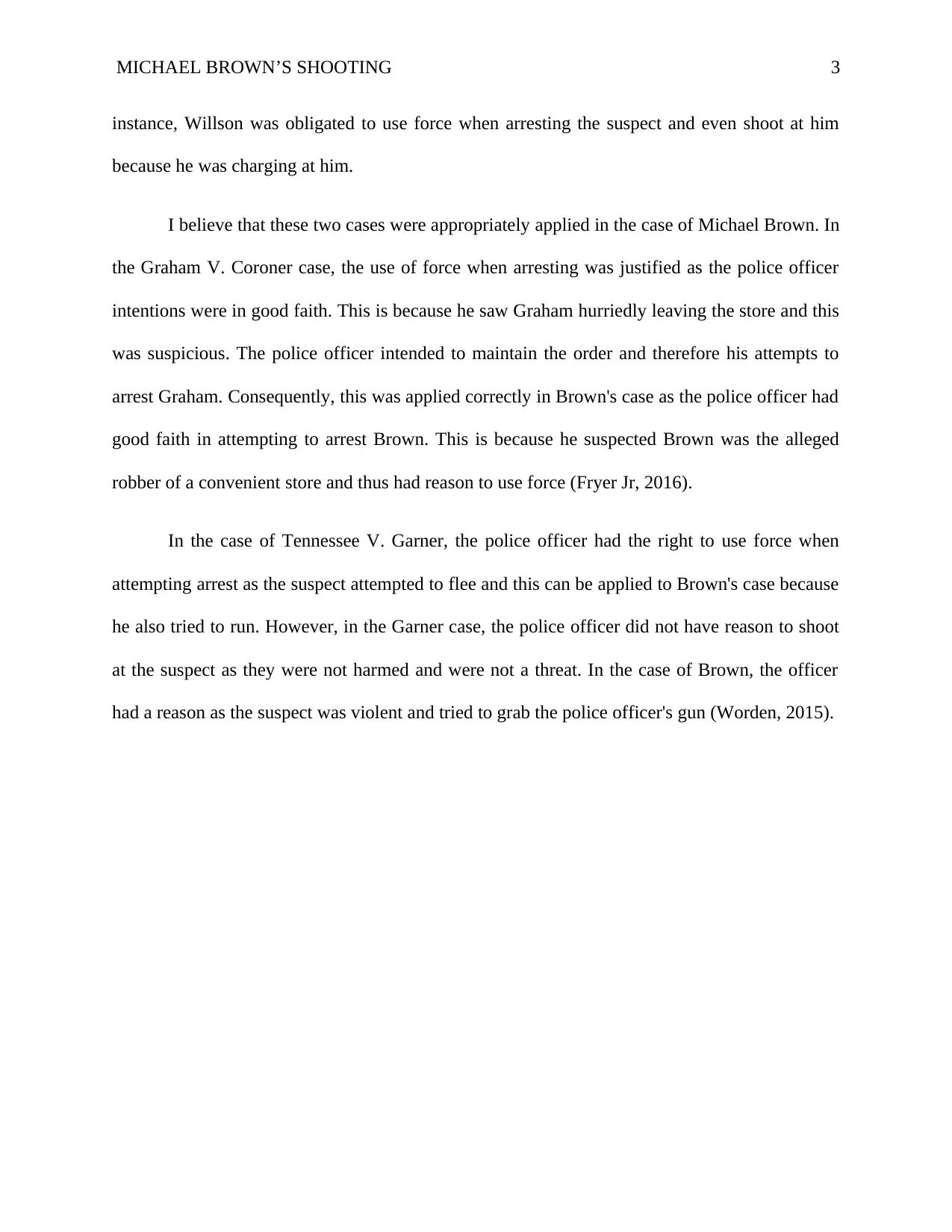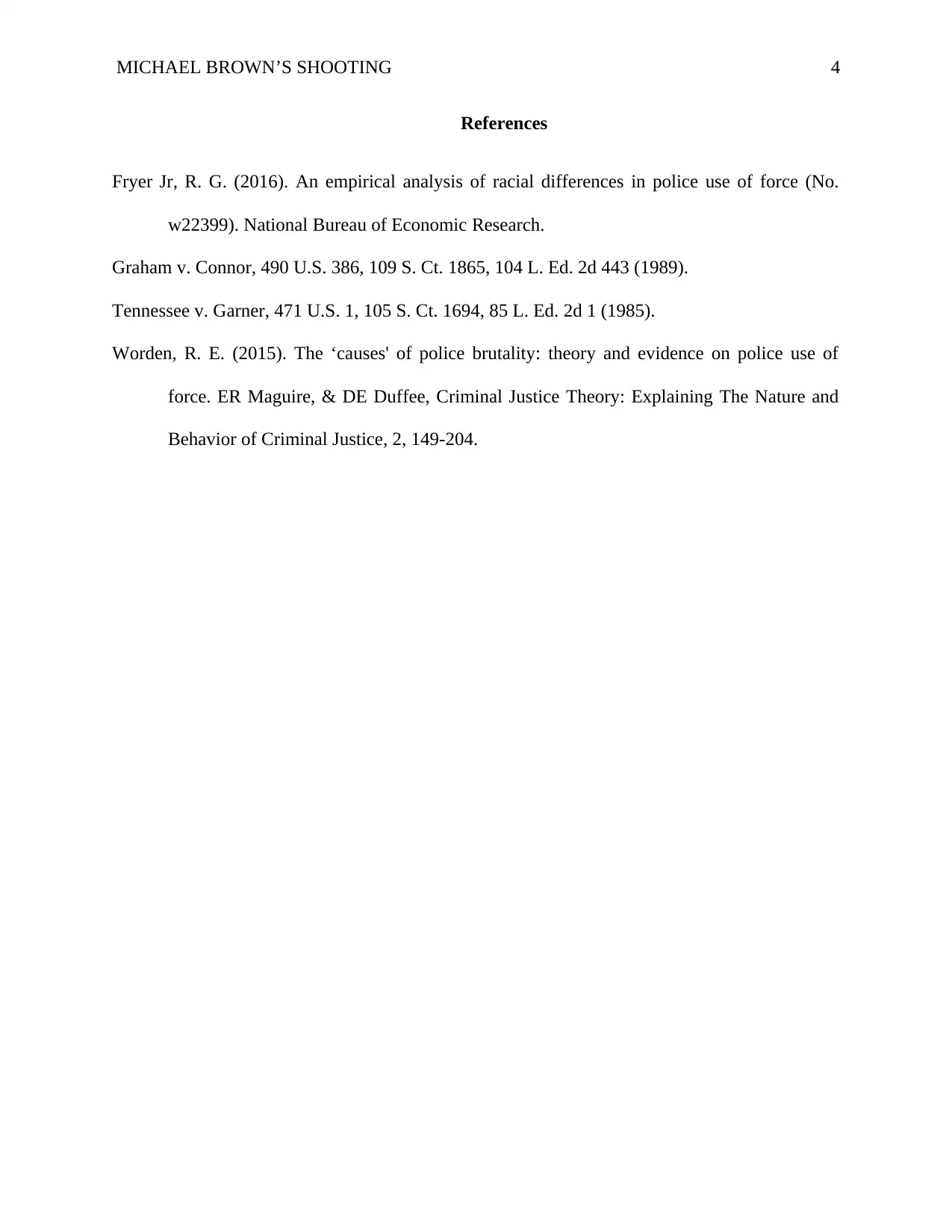Michael Brown’s Shooting
VerifiedAdded on 2023/06/11
|4
|788
|305
AI Summary
This article provides an analysis of Michael Brown’s shooting from a legal perspective. It discusses the use of force by police officers and how it relates to the Tennessee V. Garner and Graham V. Coroner cases. The article argues that the use of force by the police officer in Brown’s case was justified.
Contribute Materials
Your contribution can guide someone’s learning journey. Share your
documents today.
1 out of 4
![[object Object]](/_next/static/media/star-bottom.7253800d.svg)





